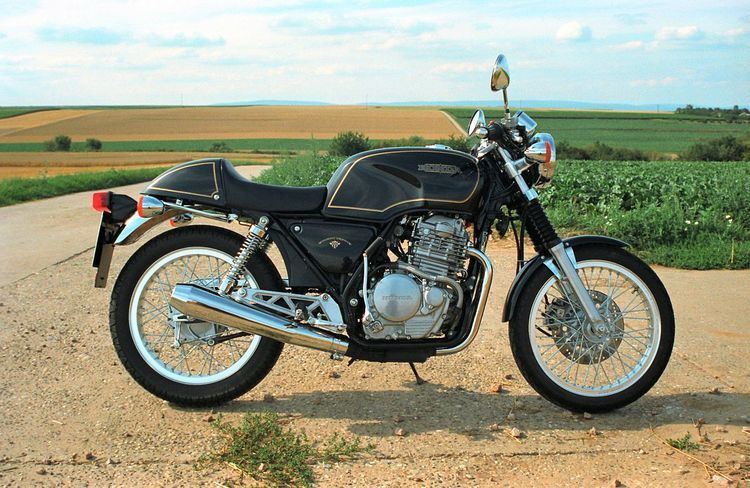Predecessor XBR500 Top speed 108 mph (174 km/h) | Production 1980s-1990s | |
 | ||
Engine 498 cc air-cooled RFVC 4-valve SOHC singleBore X Stroke: 92 x 75 mmCR: 8.9:1 | ||
The Honda GB500 'Tourist Trophy' (or TT) is an air-cooled single cylinder solo café racer motorcycle. It was first marketed in Japan in 1985 in two 400 cc and one 500 cc versions. In 1989 Honda introduced a third 400 cc version for Japan; and in 1990 a 500 cc version was available in the USA. The motorcycle was also sold unofficially on the grey market in a number of countries.
The GB500 TT's design, mechanical configuration and café racer styling hark back British 500 cc singles of the 1950s, such as the BSA Gold Star. The pinstriping on the TT's tank is particularly reminiscent of Velocettes and Manx Nortons. The GB500 TT derives its name from "Great Britain and from the Tourist Trophy (or TT), a classic 37-mile road circuit on the Isle of Man.
Overview
The GB500's engine was derived from the Honda XL600 engine, a dry-sump four-stroke dirt bike. The four-valve single cylinder engine featured a radial four-valve combustion chamber, along with a tubular frame, wire-spoked wheels with alloy rims, clip-on handlebars, solo seat, seat hump, and pin-striped fuel tank. The styling resembled TT single-cylinder racing bikes (such as the Manx Norton, the BSA Gold Star and the AJS 7R) that were prominent in the TT until the 1960s. The GB500 was a fine-handling machine: by contrast, its sibling, the XBR500, had a 10mm shorter wheelbase which "made the steering very edgy". Although sales of the TT were initially sluggish, in the UK today GB500s in good condition command premium prices.
Japanese and non-US export models had the tank and side panels painted in dark maroon with a Honda wing decal on the tank. It was available with either a single seat with no cowl or a dual seat, the latter version having a longer footrest carrier on the left to carry a pillion footrest. It featured clip-on handlebars and the instruments featured a black background with white lettering. Japanese records indicate that 1,726 were manufactured, probably all in 1985 although first road registrations continued through to at least 1987. US-model production was for model years 1989 and 1990 and featured black-green paint with gold pin-striping and lettering, as well as chrome wire wheels. Like the Japan-market model, it had steel-braided oil lines, steel side covers (i.e., not plastic), fork gaiters, non-adjustable fork with hydraulic damping and 18-inch wheels with tube-type tires. However, its round gauges have matte silver faces and its solo seat has a painted rear cowling.
In the USA, GB500s were imported for model years 1989 and 1990. In 1992, a third-party exported 1,000 unsold Honda GB 500 Clubmans (German) from the USA to Germany as grey import vehicles.
Both the 400 cc and 500 cc versions were imported and sold by Honda New Zealand. When originally released in NZ, the GB came in three models: dual seat; Mk2 with half-fairing, single seat with cowling; and no fairing, single seat.
